The balance of game elements in Cut the Rope: Experiments
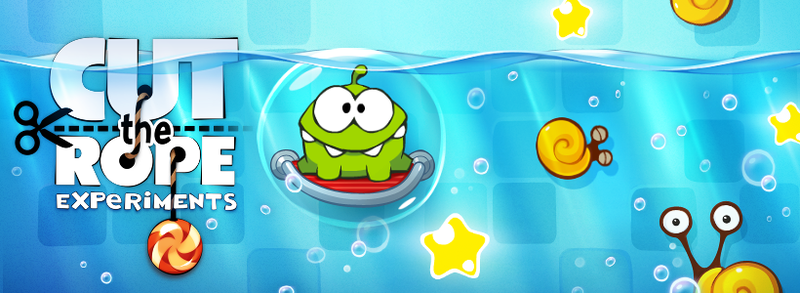
Cut the Rope: Experiments became for us a kind of experimental platform for adding a number of unique game elements that are not in the original title. In more detail I want to talk about the most recent innovations that have appeared in the level pack at Bath time (time to swim).
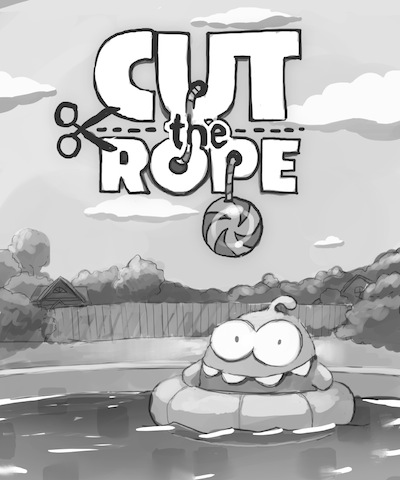
Water Unlike other game elements, water can fill with itself both the whole level and a part of it, thereby changing the properties of the gaming environment. Getting into the water, the candy pops up under the action of pushing forces. We tried to make the physical model of water as plausible as possible and such factors as the height from which the lollipop fell into the water, the initial speed of entry into the water and the vector of the direction of the lollipop are taken into account by the physical engine.
')
It was especially difficult to pick up the necessary “push coefficient” of a candy from the water, because if the candy jumps too high or vice versa very low, the player will notice this unnatural behavior and will not be able to correctly predict the behavior of the candy.
The depth of the candy being immersed in water is also taken into account; the deeper the candy was in the water in the initial state, the higher it jumps on the surface of the water as it floats up.

To add variety to the gameplay, we added several levels with diminishing water. In such levels, the player needs to quickly complete a series of actions before the water leaves the level completely.
Snail When the candy was in the water without being bound to the rope holding it, it always floated to the surface. We thought that this was not quite varied and we need to add situations where the lollipop could sink in water.
The way out was found in the addition of a "weight", which is attached to the candy and forces it to dive deeper into the water. The role of such a small weight is played by a snail. Thus, the player has the opportunity to indirectly control the behavior of the candy in the water. If a snail is attached to the candy, it will submerge smoothly into the water, and if the player drops the snail with a touch, the candy will begin to float.
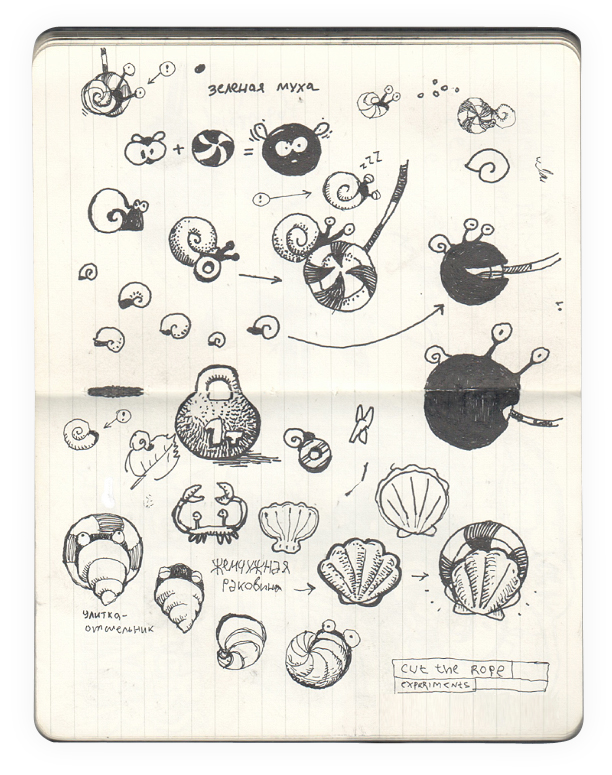
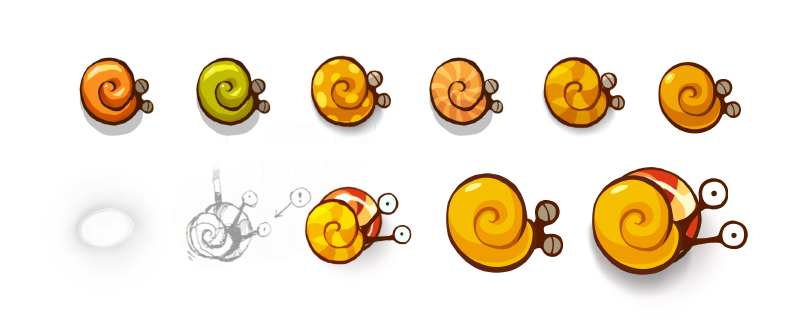
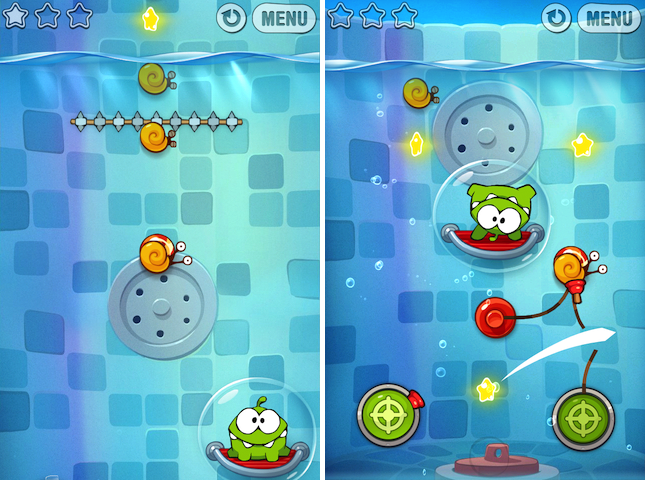
It is important to consider not only the functional features of the new elements, but their interaction with each other, as well as with the elements created earlier.
Water + Rocket . When you enter new game elements, the question always arises: which of the previously created elements and how exactly will the interaction take place? We considered and prototyped two main variants of rocket interaction with water:
1) Getting into the water, the rocket continues its movement, slightly changing the trajectory and reducing the speed under the influence of ejection forces
2) The rocket disappears when it enters the water (as if the fuse fades), and the lollipop for some time moves further by inertia and then floats to the surface
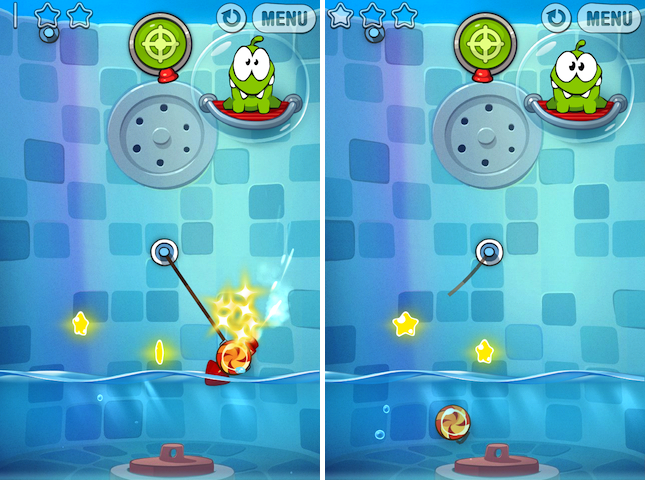
The first option did not give a fundamentally new gameplay and most often led to the fact that the rocket quickly left the limits of the level along with the candy, this entailed a loss on the level.
The second option, on the contrary, opened up new gaming opportunities. The player now needs to choose the right time and the angle of entry of the rocket into the water, so that during the subsequent jumping of the candy from the water, he would fall into the desired area, for example, on another rocket.
Water + Suction Cup . Initially, we made a version with a smooth immersion of the sucker to the depth, but immediately realized that this option gives few interesting gaming moments. In addition, the team members we asked to play in the test levels intuitively expected that the sucker would pop up.
It is always better to make the behavior of game elements intuitive to the player, so we chose the option with the sucker pop-up and we managed to create a number of levels very interesting using this behavior sucker.
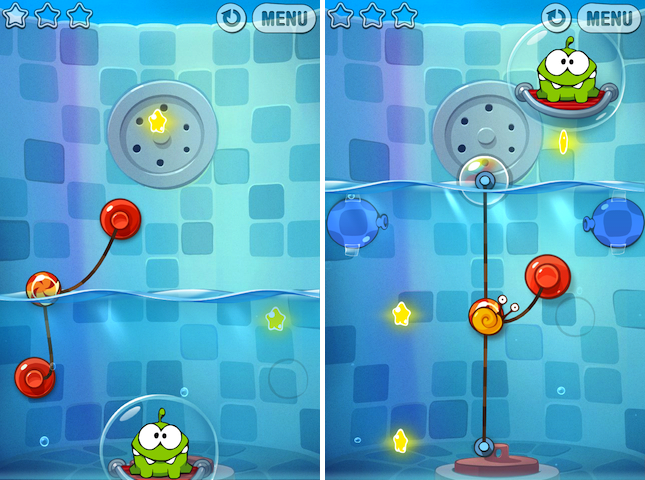
Below is the search process for the visual design of the Time to Swim level pack.
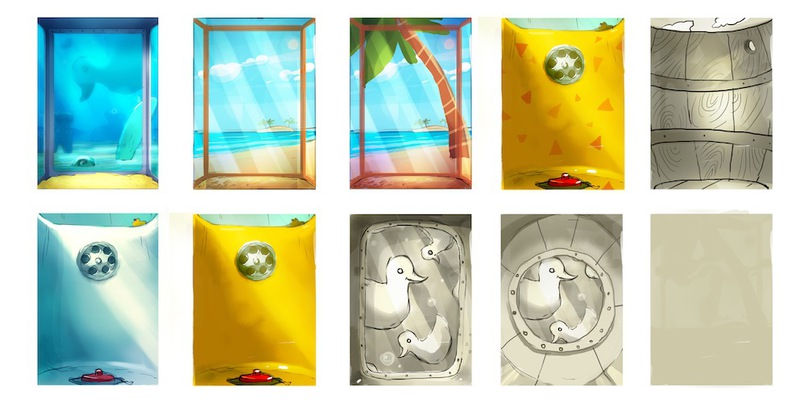
In our opinion, this update is one of the most interesting in terms of gameplay and visual design. In the end, of course, to judge gamers.
PS
In conclusion, let me give some advice to novice game designers. Of course, you need to spend a lot of time balancing and prototyping game elements and the balance of the game as a whole. But, if initially you have a feeling that the new gaming component is not interesting enough and does not bring a fundamentally new gameplay into the game, then it is better to abandon it and try to invent something else. Be sure to "play" with this element in your imagination, draw on paper possible game situations associated with it. After that, it will be much easier for you to make a final decision. Therefore, whatever you do, constantly ask yourself the question “Is it interesting?” If you honestly can say to yourself “yes, this is super!”, Then you are really on the right track.

Source: https://habr.com/ru/post/140909/
All Articles